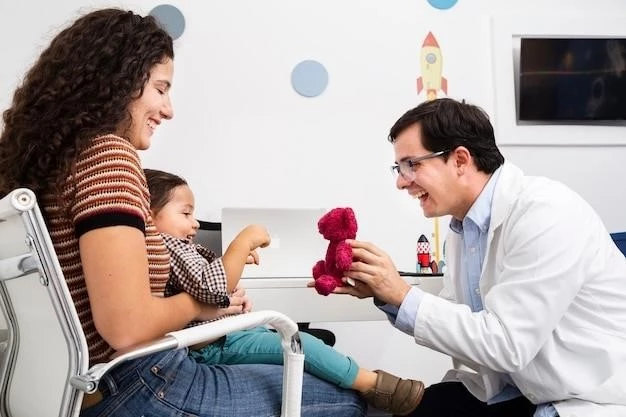Disease ⸺ Ectrodactyly Polydactyly
Introduction to Congenital Limb Deformities
Congenital limb deformities are abnormalities that occur during prenatal development, resulting in differences in the structure of limbs, fingers, and toes. These deformities can manifest as Ectrodactyly, Polydactyly, Syndactyly, and other conditions. Ectrodactyly, also known as ″lobster claw hand″ or ″split hand/split foot malformation,″ is a rare condition where the central digits are missing, creating a claw-like appearance.
Polydactyly is characterized by having extra fingers or toes beyond the typical 5 digits. Both Ectrodactyly and Polydactyly can be caused by genetic mutations that affect limb development in utero. These conditions may affect one or both hands or feet, leading to functional impairments or cosmetic concerns.
Individuals with congenital limb deformities may face challenges with fine motor skills, grip strength, and overall hand or foot dexterity. The impact of these abnormalities varies depending on the severity and extent of the deformities. While some cases may be mild and not require intervention, others may benefit from surgical procedures to improve function and aesthetics.
Understanding Ectrodactyly and Polydactyly
Ectrodactyly and Polydactyly are congenital limb deformities that affect the formation of fingers and toes. Ectrodactyly, also known as ″lobster claw hand,″ is characterized by a central cleft where the digits are missing, resembling a claw-like appearance. This condition can affect one or both hands and feet, leading to functional limitations.
Polydactyly, on the other hand, is defined by the presence of extra fingers or toes beyond the typical five-digit pattern. It can manifest unilaterally or bilaterally and may involve fully formed or rudimentary extra digits. Polydactyly can occur in isolation or as part of a syndrome associated with other anomalies.
Both Ectrodactyly and Polydactyly result from genetic mutations that disrupt the normal development of limbs during early embryogenesis. These mutations can impact the signaling pathways involved in limb patterning, leading to the observed abnormalities. While Ectrodactyly is considered a rare condition, Polydactyly is relatively common and can vary in severity.
Understanding the underlying genetic causes of Ectrodactyly and Polydactyly is essential for proper diagnosis and management. Genetic testing and counseling play a crucial role in identifying at-risk individuals and offering guidance on the implications of these conditions. Furthermore, advancements in genetic research continue to shed light on the complex mechanisms involved in limb development and associated deformities.
Causes of the Conditions
Ectrodactyly and Polydactyly are primarily caused by genetic mutations that disrupt the normal processes of limb development during early fetal stages. These mutations can affect the expression of key genes responsible for limb patterning, leading to the formation of abnormal hand and foot structures.
For Ectrodactyly, mutations in genes such as the TP63 gene have been implicated in certain forms of the condition. TP63 plays a crucial role in limb development by regulating cell survival, proliferation, and differentiation. Mutations in this gene can interfere with the formation of digits, resulting in the characteristic lobster claw appearance.
Polydactyly has also been associated with genetic variations affecting genes involved in limb development. Disruptions in signaling pathways like the Sonic Hedgehog (SHH) pathway can lead to the formation of extra fingers or toes. Variations in the GLI3 gene, a key regulator of SHH signaling, have been linked to Polydactyly in humans.
Moreover, environmental factors and maternal health during pregnancy can influence the risk of developing these limb abnormalities. Exposure to certain teratogenic substances or maternal illnesses can impact fetal development, increasing the likelihood of congenital anomalies such as Ectrodactyly and Polydactyly.
Symptoms and Abnormalities
The symptoms and abnormalities associated with Ectrodactyly and Polydactyly manifest as distinct limb deformities affecting the hands and feet. In Ectrodactyly, the most prominent symptom is the split-hand/split-foot malformation, where the central digits are missing, and the hand or foot appears claw-like.

Individuals with Ectrodactyly may experience challenges with grip strength, fine motor skills, and overall hand function due to the altered structure of their hands and feet. The condition can vary in severity, with some individuals having partial splits or clefts, while others may exhibit more significant absence of digits.
Polydactyly presents with the presence of extra fingers or toes, which can be fully formed or rudimentary. The additional digits may be functional or non-functional, depending on their size and connection to the rest of the limb. Polydactyly can occur unilaterally or bilaterally and may be isolated or part of a syndrome.
Both Ectrodactyly and Polydactyly can impact the aesthetic appearance of the hands and feet, leading to concerns about self-image and social acceptance. Additionally, the functional implications of these abnormalities may require adaptation strategies or surgical interventions to enhance hand and foot function, particularly in cases where daily activities are affected.
Prenatal Development and Diagnosis
The development of Ectrodactyly and Polydactyly occurs during prenatal stages, with limb anomalies becoming apparent as the fetus grows and matures. Prenatal ultrasound imaging can sometimes detect these limb deformities, allowing for early diagnosis and preparation for postnatal care.
During routine prenatal screenings, healthcare providers may observe abnormalities in the hands or feet of the fetus, raising suspicion of Ectrodactyly or Polydactyly. Further diagnostic tests, such as amniocentesis or genetic screening, can be performed to confirm the presence of genetic mutations associated with these conditions.
Genetic counseling plays a crucial role in helping expectant parents understand the implications of congenital limb deformities like Ectrodactyly and Polydactyly. Counseling sessions provide information about the genetic causes, recurrence risks, and available treatment options, empowering families to make informed decisions about the management of these conditions.
Early detection of Ectrodactyly and Polydactyly allows for timely intervention and planning for specialized care upon the baby’s birth. Prenatal diagnosis also enables healthcare providers to coordinate with multidisciplinary teams and specialists to provide comprehensive support for the child and family throughout the treatment and management process.
Treatment Options
The treatment of Ectrodactyly and Polydactyly aims to improve hand and foot function, enhance aesthetics, and address any associated functional limitations. The approach to treatment depends on the severity of the condition, the presence of functional impairment, and the individual’s specific needs.
For individuals with Ectrodactyly, surgical interventions may be recommended to reconstruct the hand or foot, improve grip strength, and restore a more typical appearance. Surgical techniques for Ectrodactyly may involve soft tissue rearrangement, bone grafting, and reconstruction of missing digits to enhance overall hand function.
In cases of Polydactyly, surgical removal of the extra fingers or toes may be performed to normalize hand or foot anatomy and prevent functional issues associated with the additional digits. The timing of surgery for Polydactyly is typically determined based on the complexity of the anomaly and the potential impact on limb function.
Physical therapy and occupational therapy play essential roles in the rehabilitation process following surgical interventions for Ectrodactyly or Polydactyly. These therapies focus on improving hand and foot strength, fine motor skills, coordination, and adaptation to any residual limitations resulting from the congenital limb deformities.
Collaboration among a multidisciplinary team of healthcare professionals, including orthopedic surgeons, plastic surgeons, geneticists, therapists, and counselors, ensures comprehensive care for individuals with Ectrodactyly and Polydactyly. The personalized treatment plan considers the unique needs and goals of each patient to optimize outcomes and quality of life.
Genetic Counseling and Management
Genetic counseling is integral for individuals and families affected by Ectrodactyly and Polydactyly to understand the underlying genetic factors, inheritance patterns, and potential risks of the conditions recurring in future generations. By working with genetic counselors, families can gain insights into the genetic basis of these limb deformities and make informed decisions regarding family planning and management.
Genetic testing may be recommended to identify specific genetic mutations associated with Ectrodactyly and Polydactyly. Testing results can provide valuable information about the likelihood of passing the condition on to future offspring, enabling families to assess their reproductive options and consider the implications of having a child with a congenital limb abnormality.
The management of Ectrodactyly and Polydactyly involves ongoing monitoring, support, and coordination of care across various healthcare disciplines. Genetic counselors, alongside healthcare providers, help families navigate the complexities of these conditions, address emotional and practical concerns, and access resources for optimal care.
In cases where genetic testing confirms a known mutation predisposing to Ectrodactyly or Polydactyly, families may receive tailored counseling on recurrence risks, preconception options, and prenatal testing possibilities. This personalized approach empowers individuals to make decisions aligned with their values and preferences regarding family planning and genetic considerations.
Research and Advances in Genetics
Ongoing research in genetics is advancing our understanding of the molecular mechanisms underlying Ectrodactyly and Polydactyly, offering insights into the complex genetic pathways involved in limb development. With the advent of cutting-edge genetic technologies, scientists are uncovering novel genetic variants and pathways associated with these congenital limb deformities.
Advancements in genome sequencing techniques have enabled researchers to identify specific genes and mutations linked to Ectrodactyly and Polydactyly with greater precision. By studying these genetic anomalies, researchers can elucidate the critical roles of developmental genes in limb patterning and digit formation, contributing to the development of targeted therapies and interventions.
Collaborative efforts among geneticists, clinicians, and molecular biologists have led to the discovery of genetic modifiers and environmental factors that may influence the phenotypic variability and severity of Ectrodactyly and Polydactyly. Understanding these factors is key to unraveling the full spectrum of these conditions and devising personalized treatment strategies.
Furthermore, advances in gene editing technologies, such as CRISPR-Cas9, hold promise for correcting genetic mutations associated with Ectrodactyly and Polydactyly. Preclinical studies utilizing gene editing tools have shown potential for correcting limb anomalies in animal models, paving the way for future therapeutic applications in humans.
Conclusion
In conclusion, Ectrodactyly and Polydactyly are complex congenital limb deformities with underlying genetic origins that impact the development of hands and feet. These conditions present unique challenges in terms of function, aesthetics, and psychosocial well-being for affected individuals and their families.
Advances in genetic research and clinical care have revolutionized our approach to diagnosing, treating, and managing Ectrodactyly and Polydactyly. Genetic counseling plays a crucial role in empowering families to make informed decisions about their genetic risks and reproductive options, while multidisciplinary teams work together to provide comprehensive care and support.
Through ongoing research and technological innovations in genetics, the future holds promise for further understanding the genetic underpinnings of Ectrodactyly and Polydactyly, as well as developing targeted therapies and interventions to improve outcomes for individuals with these conditions. By leveraging the power of genetics, we can enhance the quality of life and well-being of those affected by congenital limb deformities.
